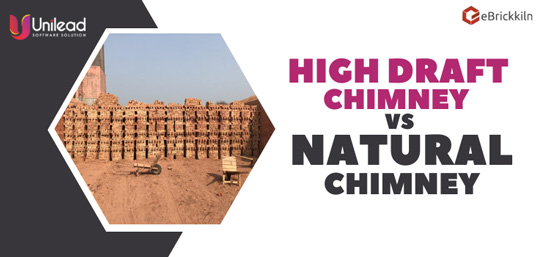
Benifits of High Draft Bhatta
A high draft Brick kiln and a natural draft Bricks kiln are two different types of kilns used for brick firing in all state of India and Other country, each with its own characteristics and advantages. Let's compare their feature:
High Draft Brick Kiln:
· Improved airflow: High draft kilns have enhanced airflow due to the use of fans or blowers. This increased draft promotes better combustion and heat transfer within the kiln.
· Faster firing cycles: The higher airflow and improved combustion efficiency of high draft kilns enable.
· Enhanced temperature control: The increased airflow helps in achieving more precise temperature control and uniformity throughout the kiln, resulting in consistent brick quality.
· Improved fuel efficiency: High draft kilns optimize the use of fuel by ensuring efficient combustion. This can lead to cost savings and reduced environmental impact.
· Better control of emissions: The improved combustion efficiency in high draft kilns can result in reduced emissions of pollutants compared to natural draft kilns.
· Increased productivity: The combination of faster firing cycles, improved temperature uniformity, and efficient fuel utilization can lead to increased productivity. This means higher production rates and potentially reduced operational costs.
· Improved fuel efficiency: The increased draft helps in better combustion and heat transfer, resulting in improved fuel efficiency. This can lead to cost savings and reduced environmental impact by minimizing fuel consumption.
Natural Draft Kiln:
· Simplicity and lower cost: Natural draft kilns rely on natural convection and do not require additional equipment like fans or blowers, making them simpler and less expensive to construct and operate.
· Reliance on natural forces: Natural draft kilns utilize the natural movement of hot gases for airflow and heat transfer. While this can be less controllable than in high draft kilns, it can still be effective for certain firing processes.
· Energy savings: Natural draft kilns can save on energy costs since they don't require electricity to power fans or blowers.
· Limited temperature control: Compared to high draft kilns, natural draft kilns may have less precise temperature control and uniformity, which can result in some variations in brick quality.
· Potential for higher emissions: Natural draft kilns may have less efficient combustion and less control over emissions compared to high draft kilns.
Along with all upgradations of smooth-running brick kiln business, Bhatta owners need to upgrade their Accounting and billing system. Still 85% brick Kiln Owner not upgraded with technology they are still traditional way of accounting mean Manual.
So, every Bhatta owner needs to upgrade their accounting system with Brickkiln management software, in market recommended software for Brick Kiln management and account management is ebrickkiln. Their 20 Year experience in Bhatta industries and provide services to Bhatta owner all state of India and other country.
Ultimately, the choice between a high draft kiln and a natural draft kiln depends on factors such as the desired production capacity, required temperature control, fuel availability, environmental considerations, and budget constraints. Each type has its own benefits and trade-offs, and the selection should be based on specific needs and considerations of the brick manufacturing operation.
